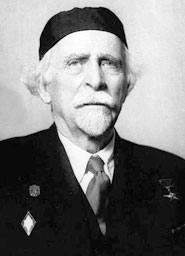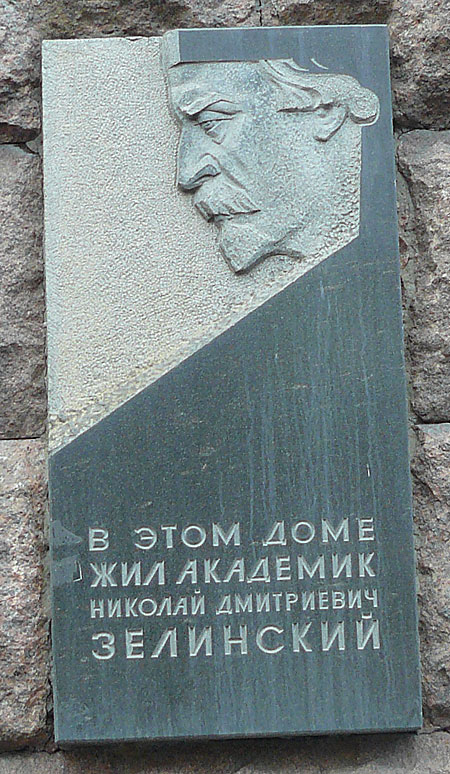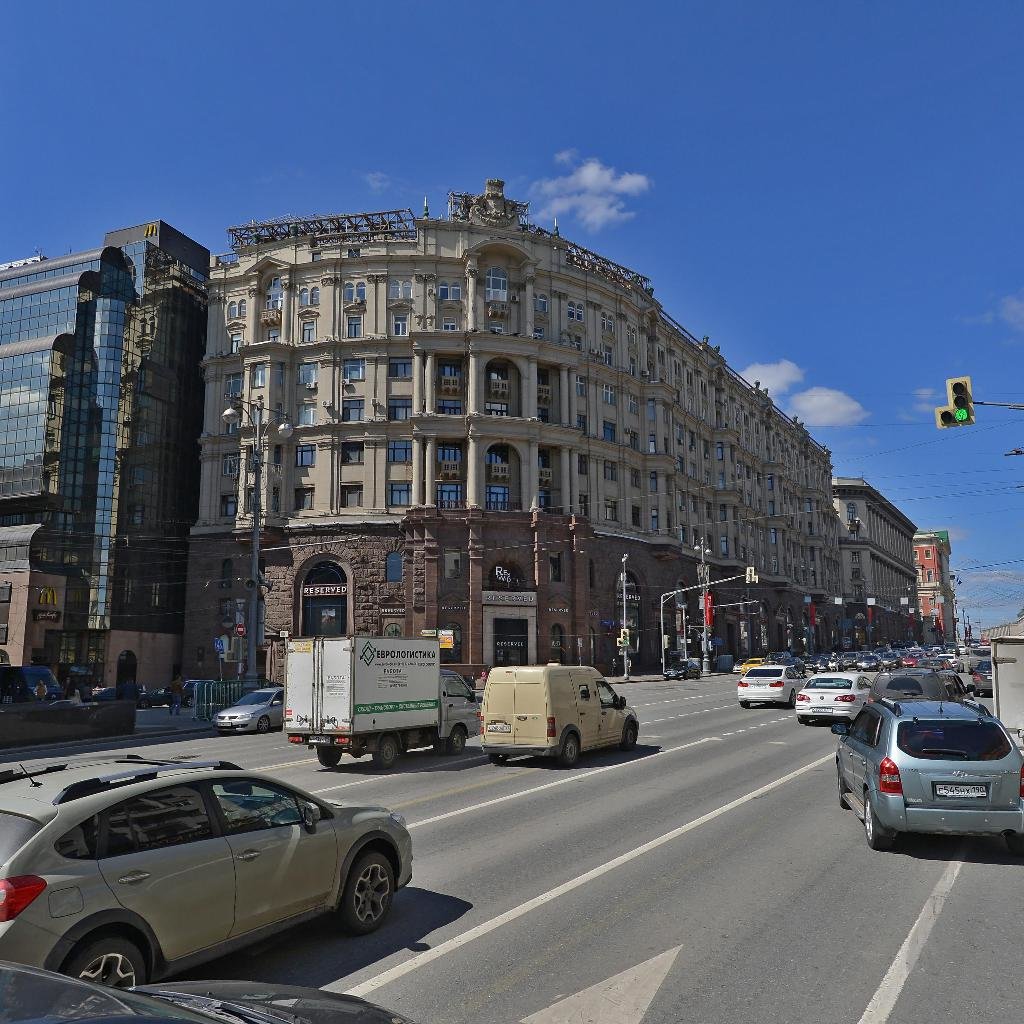Nikolay Dmitrievich
Zelinsky
1861-1953

Nikolay Dmitrievich Zelinsky was a professor at Lomonosov Moscow State University, an Academician of the USSR Academy of Sciences. He was born in Tiraspol, the Kherson province, now it is the capital of the Pridnestrovian Moldavian Republic, in a noble family. At the age of five, he became an orphan and he was brought up by his grandmother. He received his initial education at Tiraspol county School, then at the famous Richelieu Gymnasium in Odessa. His interest in chemistry appeared very early, at the age of 10 he already carried out chemical experiments. In 1884 he graduated from Novorossiysk (Odessa) University and was left at the Department of Chemistry. In 1885 he was sent as a fellow of the faculty to Germany. He trained in chemical laboratories in Leipzig and in Göttingen, where much attention was paid to the issues of theoretical organic chemistry. In the course of his work, Zelinsky obtained an intermediate product – dichloroethyl sulfide, which was later called mustard gas and became one of the strongest toxic substances. Having returned from abroad in 1888, Zelinsky passed the master’s exam and was enrolled as a freelance private associate professor at Novorossiysk University. He began to deliver lectures on organic chemistry. He began independent scientific work, and in 1889 defended his master’s thesis. In 1890 he assumed the position of full-time privatdozent of Novorossiysk University. In 1891 Zelinsky brilliantly defended his doctoral dissertation. In 1893 he moved to Moscow and was appointed as an extraordinary professor at Moscow University. He taught the basic course of organic chemistry for students of the natural department, conducted practical classes in analytical and organic chemistry, for a number of years at the invitation of I.M. Sechenova he taught a course in organic chemistry to students of the medical faculty. From 1893 to 1911 he published over 200 scientific articles. An important object of scientific research of this period was oil, the result of the research was the launch of the first production of thermal cracking of oil in Russia. Zelinsky managed to conduct a lot of public work. He organized the Department of Organic Chemistry at the Higher Women’s Courses, created an excellent laboratory. In the early 1900s. Zelinsky participated in the creation of the Central Laboratory of the Ministry of Finance in Moscow, in 1908 – in the opening of People’s University named after Shanyavsky. In 1911, among a large group of professors and lecturers at Moscow University, Zelinsky resigned in protest against the reactionary policy of the Minister of Education Kasso. For some time, he delivered lectures at Shanyavsky People’s University, and then moved to St. Petersburg. In a new place in 1911 he became the head of the Department of Commodity Science at the Faculty of Economics of Polytechnic Institute and the head of the Central Laboratory. During the First World War (1914-1918), the scientist actively conducted research in the field of catalytic cracking and pyrolysis of oil, which contributed to a noticeable increase in the yield of toluene — raw materials for the production of trinitrotoluene (TNT, tola). This research was of paramount importance for the defence industry. An important achievement was the development of a means of protection against chemical warfare agents – a coal gas mask. Realizing that a universal gas mask required a universal absorber, for which the nature of the gas would be completely indifferent, Zelinsky came up with the idea of using ordinary charcoal. Together with V.S. Sadikov, he developed a method for activating coal by calcination, which significantly increased its absorption capacity. In February 1916, after field tests, the gas mask was adopted. In total, during the years of the First World War, more than 11 million gas masks were sent to the Russian and Allied armies, which saved the lives of millions of soldiers. After the February Revolution of 1917, Zelinsky received the right to return to Moscow University and moved to Moscow again, he was elected as a professor at the Department of Organic Chemistry and the head of the Laboratory of Organic and Analytical Chemistry. After the October Revolution of 1917, he continued to work at the department. Since 1918, Zelinsky participated in solving urgent problems facing the country, studied methods for producing gasoline from fuel oil, published a large number of articles on catalysis, synthesis of new compounds, the origin of oil, cholesterol, protein substances, synthesis of rubber and others. In 1935 he actively participated in the organization of the Institute of Organic Chemistry of the USSR Academy of Sciences.
Address: Moscow, Tverskaya str., 9

